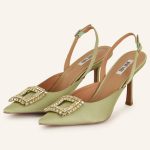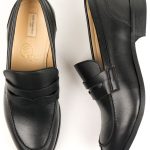Unveiling The Mystery: Why Are Barefoot Shoes So Expensive? Click Here To Discover The Truth And Find Your Perfect Pair!
Why Are Barefoot Shoes So Expensive?
Greetings, Shoes Enthusiast! Have you ever wondered why barefoot shoes are so expensive? In this article, we will delve into the reasons behind the high price tags of these minimalist footwear options. From the materials used to the manufacturing process, we will uncover the key factors that contribute to the cost of barefoot shoes. So, let’s dive in and explore the world of barefoot shoes!
Introduction
1. The Rise of Barefoot Shoes
2 Picture Gallery: Unveiling The Mystery: Why Are Barefoot Shoes So Expensive? Click Here To Discover The Truth And Find Your Perfect Pair!


Barefoot shoes have gained popularity among fitness enthusiasts and fashion-forward individuals in recent years. These shoes aim to mimic the feeling of walking or running barefoot, providing a more natural and unrestricted experience. However, one question that often arises is why these shoes come with a hefty price tag compared to traditional footwear options.

Image Source: anyasreviews.com
2. The Materials
One of the primary reasons for the high cost of barefoot shoes is the quality of materials used. These shoes are typically made from premium materials such as high-quality leather or durable synthetic fabrics. These materials ensure durability, breathability, and flexibility, allowing for maximum comfort and performance. However, such materials come at a higher price, contributing to the overall cost of the shoes.
3. Specialized Manufacturing

Image Source: anyasreviews.com
The manufacturing process of barefoot shoes is another factor that drives up their price. These shoes require specialized techniques and craftsmanship to create the unique sole design that promotes a barefoot-like experience. Skilled artisans and technicians are involved in the production process, adding to the labor cost and, consequently, the final price of the shoes.
4. Limited Production
Unlike mass-produced shoes, barefoot shoes are often produced in smaller quantities. This limited production adds exclusivity to the shoes, making them more desirable for certain consumers. However, producing shoes in smaller quantities increases the production cost, as the economies of scale cannot be fully utilized. As a result, the price of barefoot shoes is pushed higher to compensate for the lower volume of production.
5. Research and Development
Innovation and continuous improvement play a significant role in the development of barefoot shoes. Companies invest in extensive research and development to refine the design and functionality of these shoes. This commitment to innovation comes at a cost, as the expenses incurred in the research and development process contribute to the overall price of barefoot shoes.
6. Branding and Marketing
Branding and marketing efforts also impact the price of barefoot shoes. Establishing a brand presence and promoting the unique features and benefits of these shoes require significant investments. These expenses, including advertising campaigns and endorsements, are factored into the final price of the shoes.
7. Exceptional Durability and Quality
Lastly, the durability and quality of barefoot shoes justify their higher price. These shoes are designed to withstand rigorous activities and provide long-lasting performance. The use of premium materials, combined with meticulous craftsmanship, ensures a level of durability that surpasses many conventional footwear options. While the initial investment may be higher, barefoot shoes offer prolonged wearability and value.
What Makes Barefoot Shoes Expensive?
1. The Materials Used
When it comes to barefoot shoes, the materials used significantly impact their price. High-quality leather, sustainable fabrics, and eco-friendly materials are often preferred choices for these shoes. The use of premium materials ensures durability, breathability, and flexibility, but it also increases the overall cost of production.
2. Specialized Manufacturing Techniques
The manufacturing process of barefoot shoes involves specialized techniques and craftsmanship. Skilled artisans and technicians work meticulously to create the unique sole design and ensure optimum comfort and performance. The labor-intensive nature of the manufacturing process adds to the cost of barefoot shoes.
3. Limited Production Quantity
Barefoot shoes are often produced in limited quantities, contributing to their exclusivity. However, producing shoes in smaller volumes means higher production costs as the economies of scale cannot be fully utilized. The limited production quantity increases the price of barefoot shoes.
4. Research and Development
Companies investing in barefoot shoes prioritize research and development to enhance their design and functionality continually. The expenses incurred in the research and development process, including testing new materials and technologies, add to the overall cost of producing these shoes.
5. Branding and Marketing Expenses
Building a brand presence and marketing barefoot shoes require significant investments. Advertising campaigns, endorsements, and other marketing efforts contribute to the final price of the shoes. The expenses associated with branding and marketing are reflected in the price tag of barefoot shoes.
6. Durability and Quality Assurance
Barefoot shoes are known for their exceptional durability and quality. They are designed to withstand rigorous activities and provide long-lasting performance. The use of premium materials and meticulous craftsmanship ensures longevity, making barefoot shoes a worthy investment despite their higher initial cost.
Advantages and Disadvantages of Barefoot Shoes
1. Advantages of Barefoot Shoes
👍 Enhanced Foot Strength: Barefoot shoes promote natural foot movement, helping to strengthen the muscles and tendons in the feet.
👍 Improved Balance and Stability: By providing a closer-to-barefoot experience, these shoes can enhance balance and stability during various physical activities.
👍 Better Proprioception: Barefoot shoes allow for better sensory feedback, enabling the wearer to have a more accurate perception of their body’s position and movement.
👍 Healthier Foot Mechanics: The minimalist design of barefoot shoes encourages proper foot mechanics, reducing the risk of common foot problems such as plantar fasciitis or bunions.
👍 Increased Range of Motion: These shoes promote natural foot movement, allowing for a wider range of motion in the feet and ankles.
2. Disadvantages of Barefoot Shoes
👎 Limited Protection: Barefoot shoes offer minimal protection against sharp objects or extreme weather conditions.
👎 Transition Period: Switching to barefoot shoes may require a transition period for the feet to adapt to the different mechanics and support.
👎 Less Cushioning: Compared to traditional shoes, barefoot shoes have less cushioning, which may not be suitable for individuals with specific foot conditions or who require extra support.
👎 Higher Price: As discussed earlier, barefoot shoes tend to be more expensive due to the quality materials and manufacturing processes involved.
👎 Limited Style Options: While the market for barefoot shoes is growing, the variety of styles and designs is still relatively limited compared to traditional footwear options.
Frequently Asked Questions
1. Are barefoot shoes suitable for all activities?
Yes, barefoot shoes can be used for various activities such as walking, running, strength training, and even casual wear. However, it’s important to choose shoes specifically designed for the intended activity.
2. Can barefoot shoes help with foot pain?
Barefoot shoes can potentially help alleviate foot pain by promoting natural foot movement and proper foot mechanics. However, it is always recommended to consult with a healthcare professional for personalized advice.
3. Are barefoot shoes waterproof?
Not all barefoot shoes are waterproof. The level of water resistance or waterproofing varies depending on the specific shoe model and brand. It’s essential to check the product description or contact the manufacturer for specific details.
4. How long do barefoot shoes typically last?
The lifespan of barefoot shoes depends on various factors, including the frequency of use and the intensity of the activities performed. With proper care and maintenance, barefoot shoes can last anywhere from several months to a few years.
5. Can barefoot shoes be worn with socks?
Yes, barefoot shoes can be worn with socks, especially if the wearer prefers the added layer of comfort or wishes to minimize direct contact with the shoe’s interior. However, it’s important to choose socks that are compatible with the minimalistic design of the shoes.
Conclusion
In conclusion, the high price of barefoot shoes can be attributed to various factors, including the quality materials, specialized manufacturing techniques, limited production quantities, research and development expenses, branding and marketing efforts, and the exceptional durability and quality they offer. While the initial investment may be higher, barefoot shoes provide a unique and natural footwear experience that can benefit individuals seeking enhanced foot strength, improved balance, better proprioception, healthier foot mechanics, and increased range of motion. It is important to weigh the advantages and disadvantages of barefoot shoes to determine if they align with your needs and preferences. So, go ahead and explore the world of barefoot shoes – your feet will thank you!
Final Remarks
Disclaimer: The information provided in this article is for informational purposes only and should not be construed as professional advice. The pricing and features of barefoot shoes may vary depending on the brand and model. Before making any purchase, it is recommended to research and evaluate different options based on your individual needs and preferences. Always consult with a healthcare professional for personalized advice regarding footwear choices and foot health.
This post topic: Shoes



